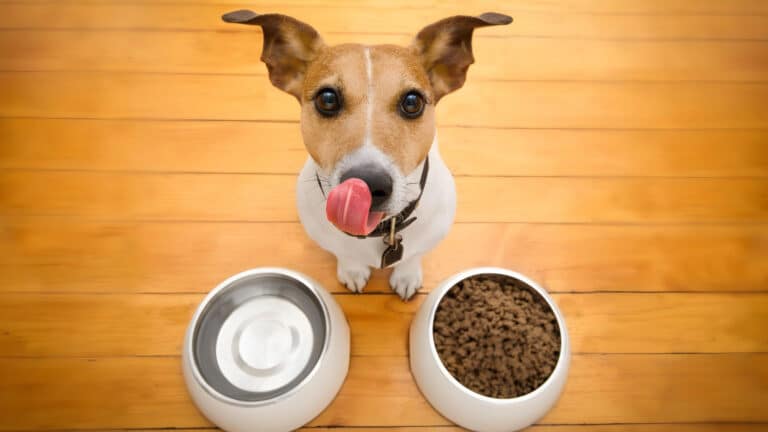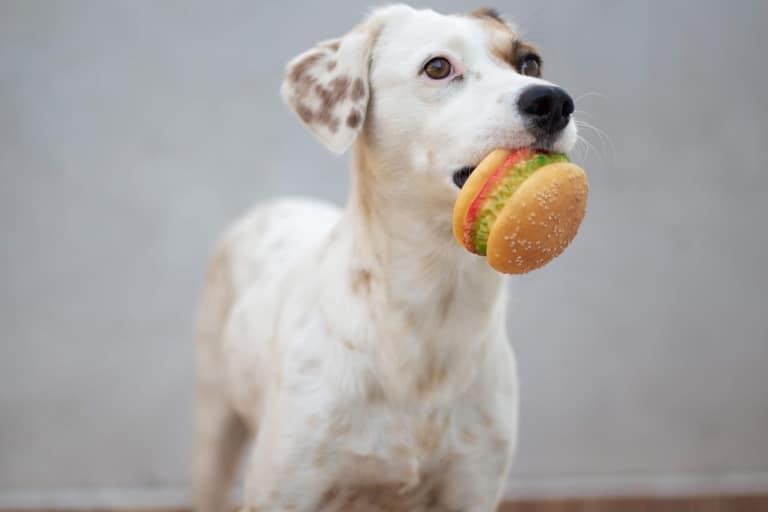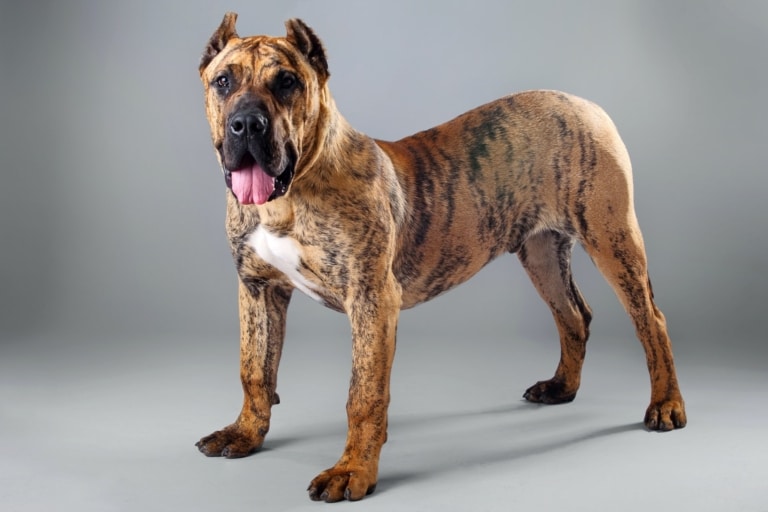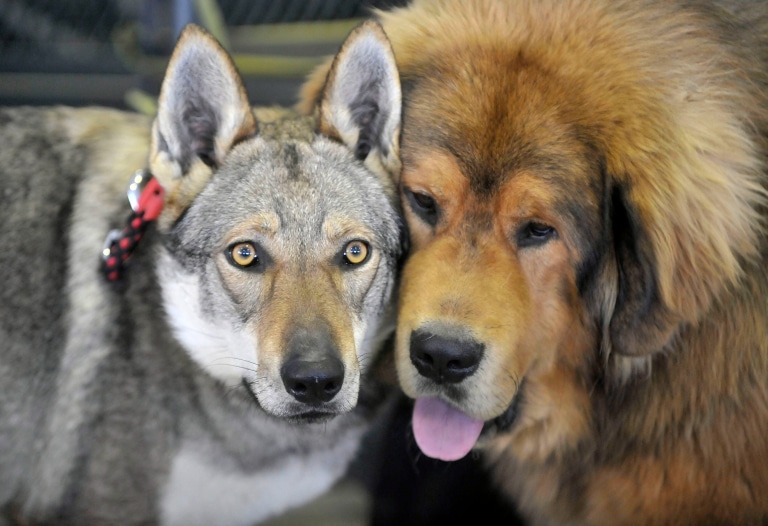Providing good nutrition for dogs is an important aspect that should not be underestimated. As in humans, it should be balanced and saturated with the necessary nutrients.
Proper nutrition gives the dog energy for an active lifestyle, promotes healthy growth and muscle development, supports the immune system and helps prevent various diseases. In addition, the condition of the coat and skin, teeth and gums, as well as the functioning of the digestive system, depends on nutrition. A properly balanced diet helps to avoid problems with the animal’s health, so it is important to pay special attention to it.
Basics of a dog’s diet
A dog’s basic diet should contain a variety of nutrients necessary for its health and well-being, and consist of proteins, fats, carbohydrates, vitamins and minerals. It is necessary to monitor the water balance. A sufficient amount of water helps in maintaining hydration and proper functioning of all body systems.
Meat
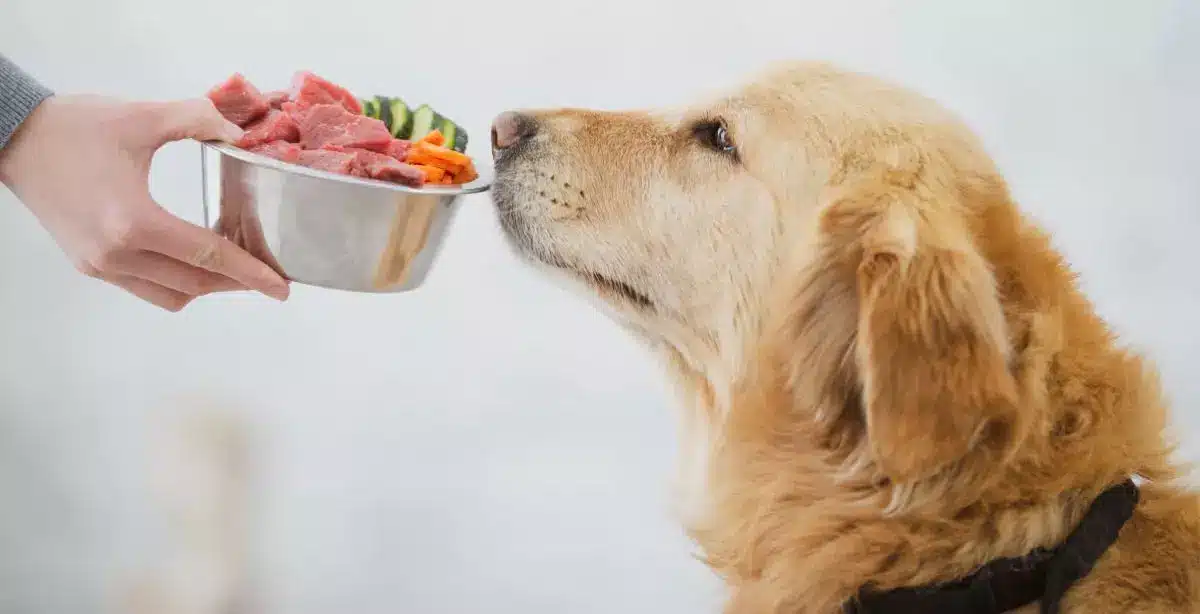
Dogs benefit from a variety of meat sources (turkey, lamb, beef, veal, fish, etc.) as they are an important source of protein and other nutrients. Chicken should be carefully introduced into the diet, as it can provoke an allergic reaction. Regarding the frequency of feeding, it is important to consider the age, size, activity and individual needs of the pet, however, dogs are usually fed once or twice a day.
Bones
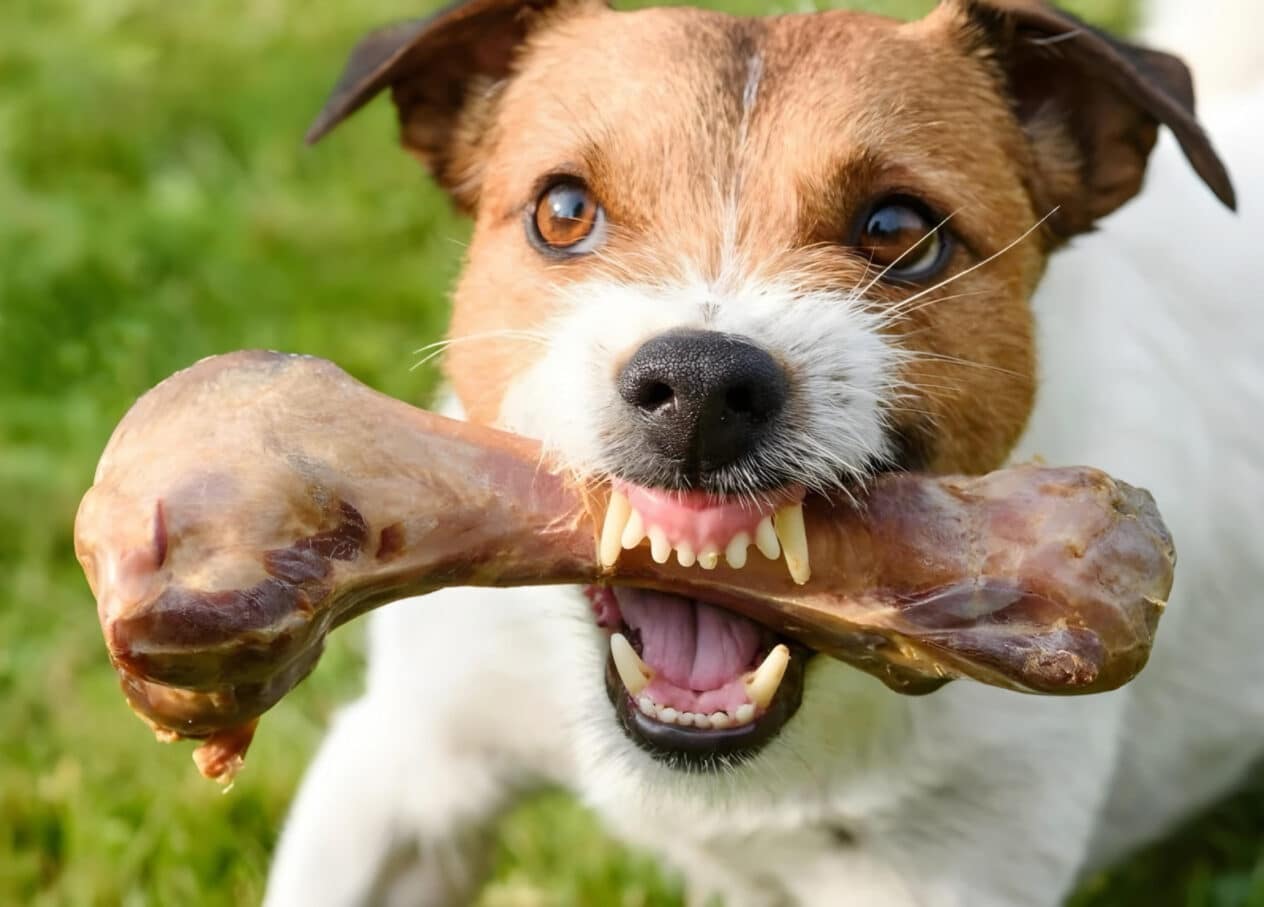
It is better to avoid any bones, especially those that break easily or have sharp parts due to the risk of damage to the oral cavity or intestines (chicken, fish, pork bones). If you still decide to give your pet a bone, you should choose a safe alternative. Some dog food stores and manufacturers make specially treated bones that are intended for consumption and help reduce the risk of injury. It is also important not to allow your dog to gnaw on the bones without your supervision.
Vegetables
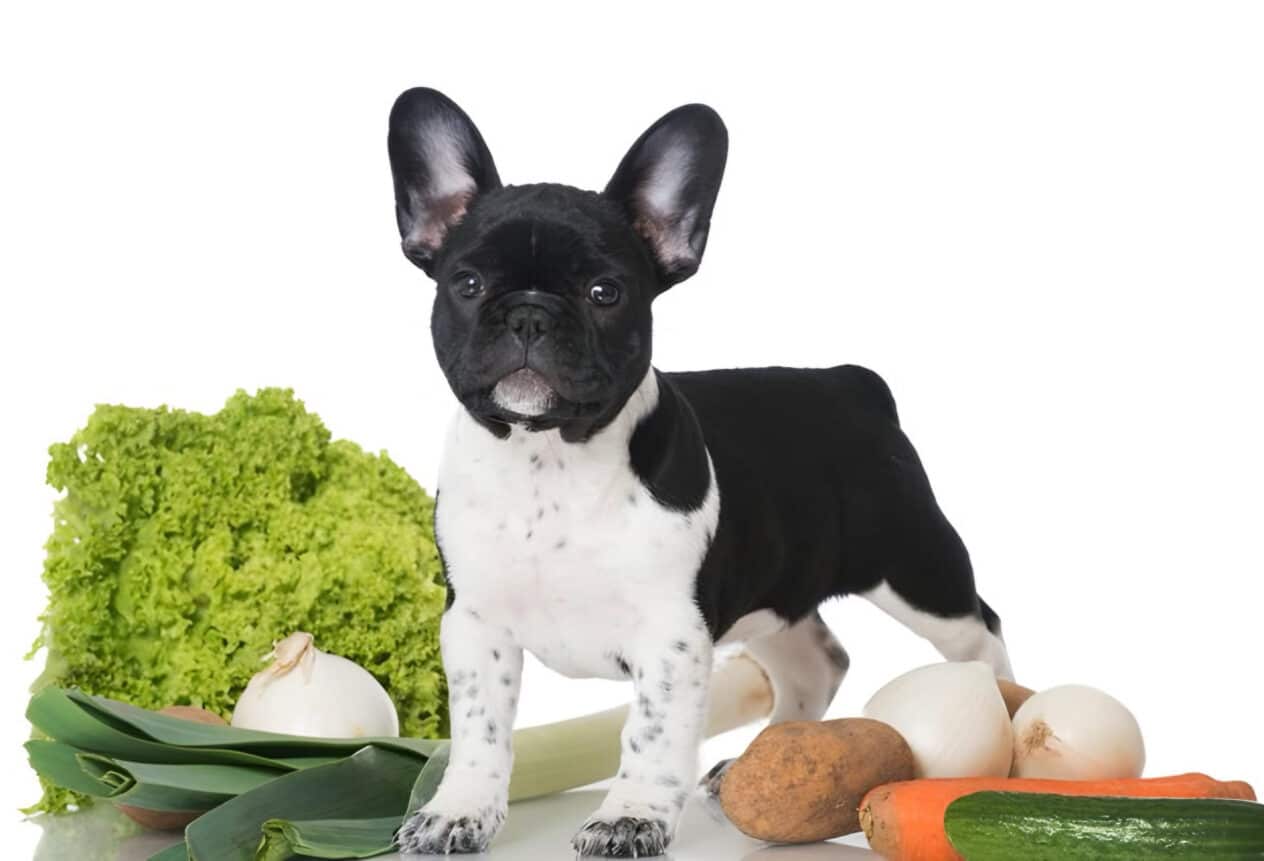
They can be an important part of a healthy diet for dogs because they contain vitamins, minerals and phytonutrients. Here are some safe vegetables to add to your diet:
- Carrot. It is rich in beta-carotene, which is converted into vitamin A, which is necessary for a dog’s healthy skin and vision.
- Pumpkin. It is a source of vitamins A and C, and is also rich in fiber, which contributes to the health of the gastrointestinal tract.
- Zucchini It contains water and important electrolytes such as potassium.
Cooking vegetables can be varied, so you should take into account the preferences of your pet. One dog may be comfortable eating vegetables raw, while another may be comfortable eating them after cooking them, such as baking, boiling, or steaming them. It is important to follow the portion sizes and make sure that the dog is not allergic to certain types of vegetables before adding them to the diet.
Cereal porridge
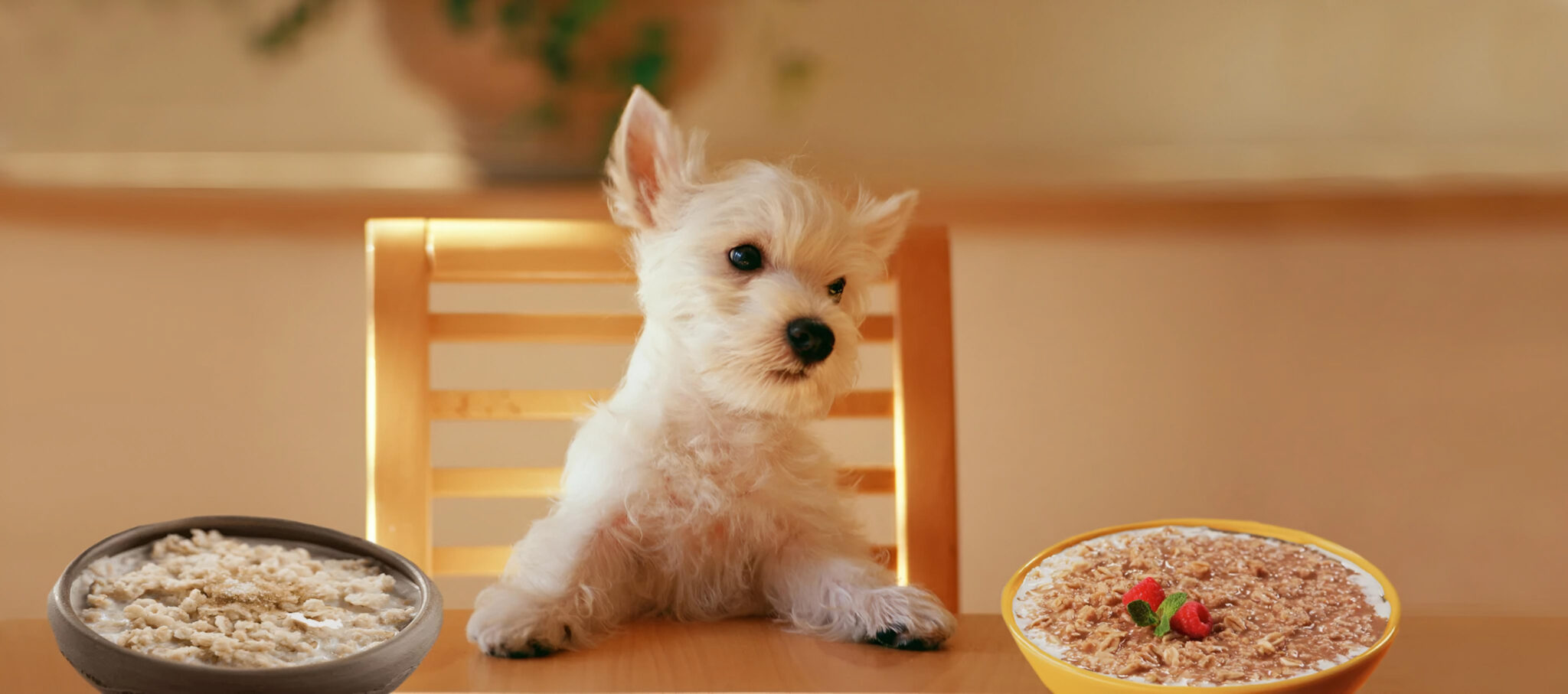
Dogs can be given a variety of cereals: rice, buckwheat, millet, barley, oats, etc. However, allergic reactions and individual intolerance should be excluded, starting with the addition of a small amount of cereal and monitoring the dog’s reaction.
There are no special features of cooking porridge for dogs. The main thing is to cook in a large amount of water or broth to ensure a soft consistency of the cereal. Portions may depend on the weight, size, age and activity of the dog. Typically, pets need 1/2 to 2 cups of cereal per day, divided into two or three meals.
How to choose natural products for a balanced diet

Choosing natural products for a balanced diet for your dog can be a difficult task, but here are some tips that can help:
- Variety. Include a variety of foods such as meat, fish, vegetables, fruits and grains in your diet to provide a wide range of nutrients.
- Balance. It is important to balance the ratio of proteins, fats and carbohydrates in the dog’s diet in accordance with its needs and state of health.
- Supplemental vitamins and minerals. If your dog is not getting all the nutrients it needs from its diet, consider adding vitamins and minerals or using special supplements.
- Quality. Choose high-quality, fresh products without added preservatives, dyes and flavorings.
- Thorough preparation. Consider the requirements for cooking temperature, cooking time and possible poisonous products for dogs.
- Individual needs of the animal. Take into account the pet’s characteristics, such as age, size, activity and health, when choosing products and calculating the diet.
- Specialist consultation. If you have any doubts or questions about proper nutrition for your dog, consult your veterinarian or nutritionist. They will be able to provide you with individual recommendations, taking into account the needs of your pet.
List of foods to avoid in dog food

It is important to avoid certain foods in your dog’s diet because they can cause serious health problems. Here is a basic list, but it is not exhaustive, so it is important to always check the composition of products and consult with a veterinarian.
- Onion and garlic. Contains substances that can cause the destruction of the dog’s red blood cells, which will provoke anemia.
- Chocolate. The theobromine content in chocolate can be poisonous to dogs and cause serious problems with the heart and nervous system.
- Grapes and raisins. Can cause kidney failure in dogs.
- Alcohol. Even a small dose can be dangerous for a dog and lead to serious poisoning.
- Dairy products. Some dogs can be lactose intolerant, which can cause gastrointestinal problems.
- Fatty and salty food. Can cause pancreatitis or other problems with the gastrointestinal tract.
- Sweet food. Excess sugar can lead to weight gain and dental problems.
- Raw meat products. May contain bacteria or parasites that can cause disease.
In addition to the diet: what should be given
Vitamin and mineral supplements with natural nutrition
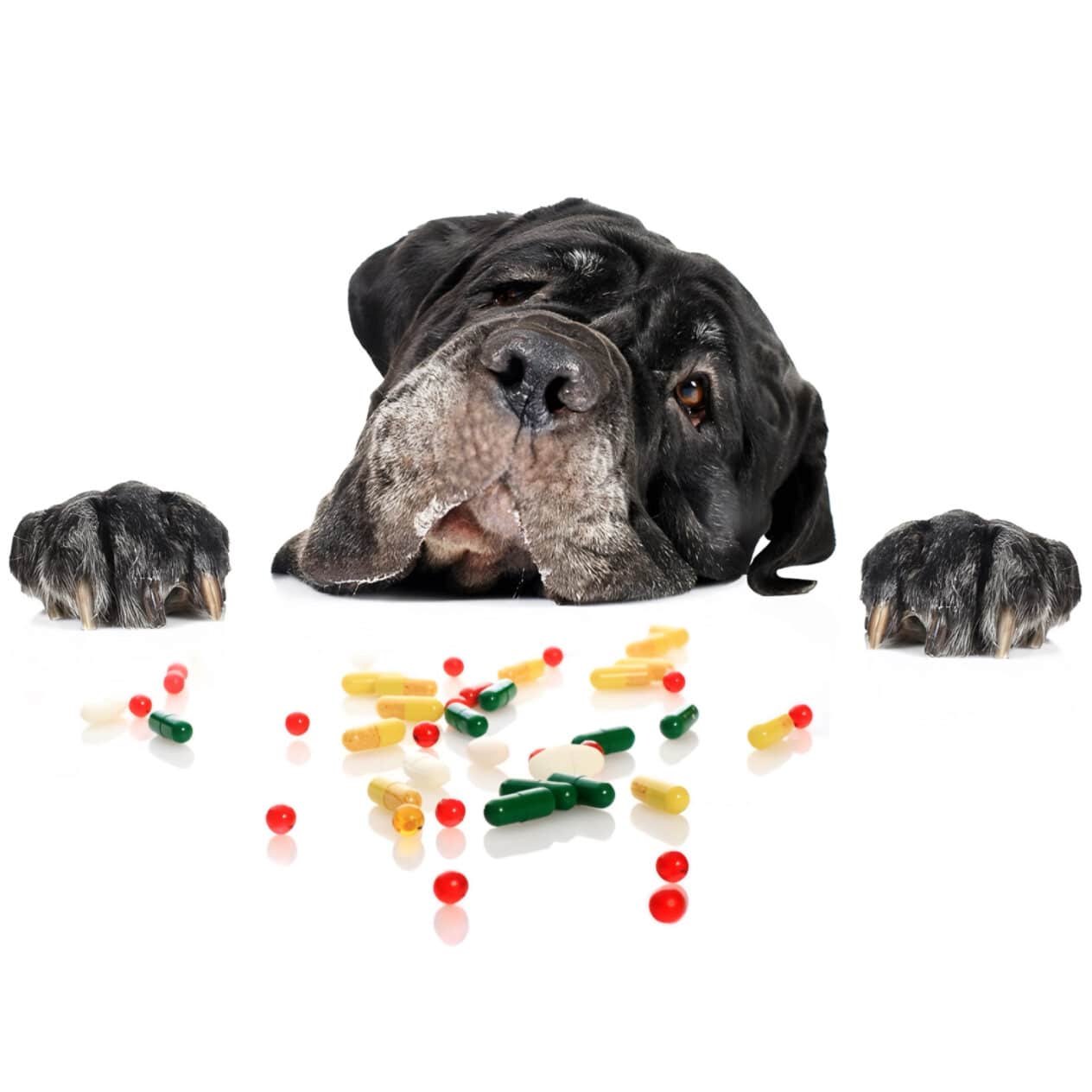
When feeding a dog naturally, there may be a need for vitamins and minerals, especially if the diet does not provide all the necessary nutrients. However, before introducing any supplements to the diet, it is important to consult a specialist for advice and recommendations. Below are some vitamins and minerals that can be included in a dog’s diet:
- Vitamin A. Important for vision, immune system and growth.
- Vitamin D. Helps absorb calcium and phosphorus, which are necessary for the health of bones and teeth.
- Vitamin E. Antioxidant that helps protect cells from damage.
- Vitamin C. Supports the health of joints and the immune system.
- Group B vitamins play an important role in metabolism and functioning of the nervous system.
- Calcium and phosphorus. Important for the health of bones and teeth.
- Iron. Necessary for the formation of hemoglobin and transportation of oxygen in the body.
- Zinc. Supports the health of the skin, coat and immune system.
- Omega-3 and Omega-6 fatty acids. They help maintain skin health and also have anti-inflammatory properties.
Please note that the correct dosage and ratio of vitamins and minerals is important for your dog’s health. Always follow the recommendations of a specialist and avoid self-prescribing supplements without consulting a specialist.
Dainty
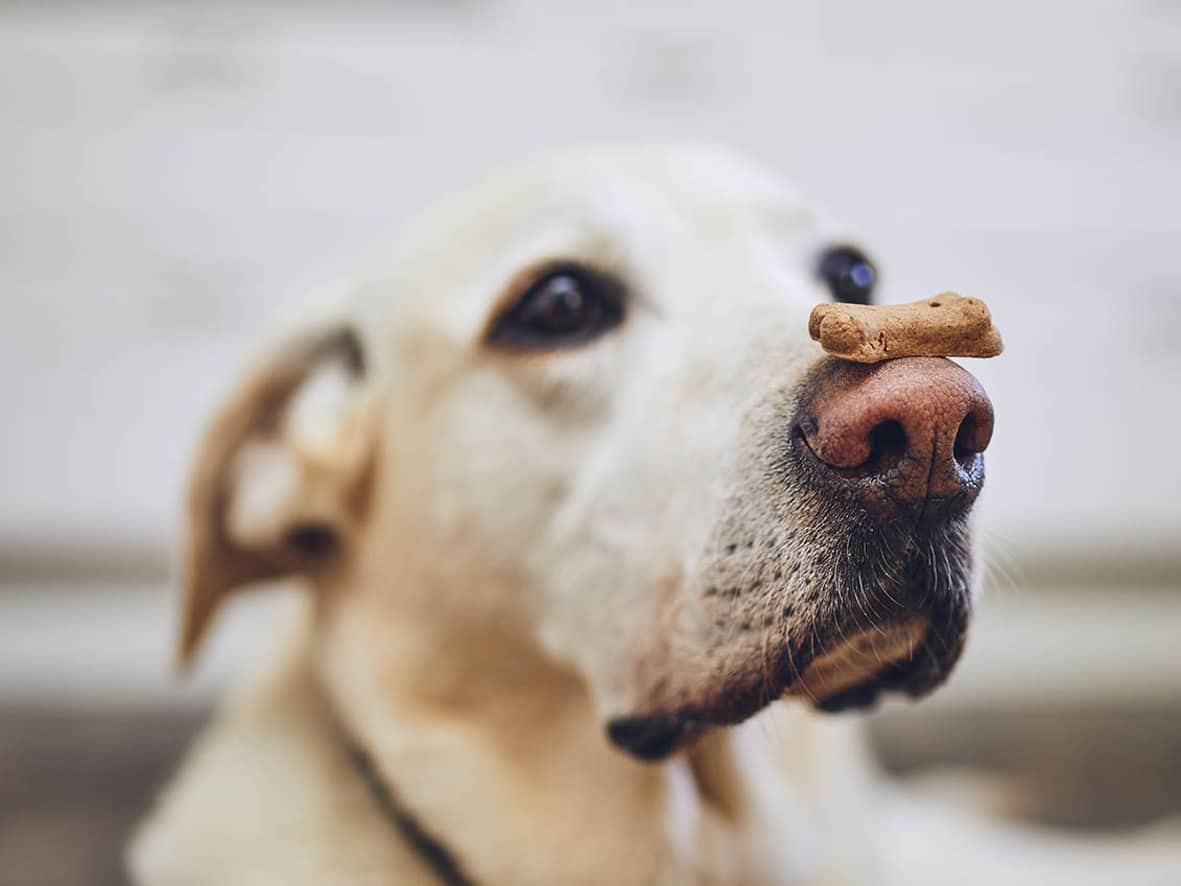
Dog treats can be a great addition to your pet’s diet and can be used as a reward for good behavior, for command training, or simply as a way to show love and care. It is important to choose treats that meet your dog’s needs and do not harm his health. For example, smaller and softer treats should be chosen for smaller dogs, while larger and harder treats can be used for larger breeds. Some treats have additional functional benefits, such as cleaning teeth, supporting joints, or soothing the gastrointestinal tract. It is also important to check the composition for the presence of allergens that can cause a reaction in your pet.
Always remember that the dog’s diet should be balanced and varied, and treats should only be a supplement to the main diet. Do not exceed the recommended amount to avoid excess weight and other health problems.
What to feed an allergic dog
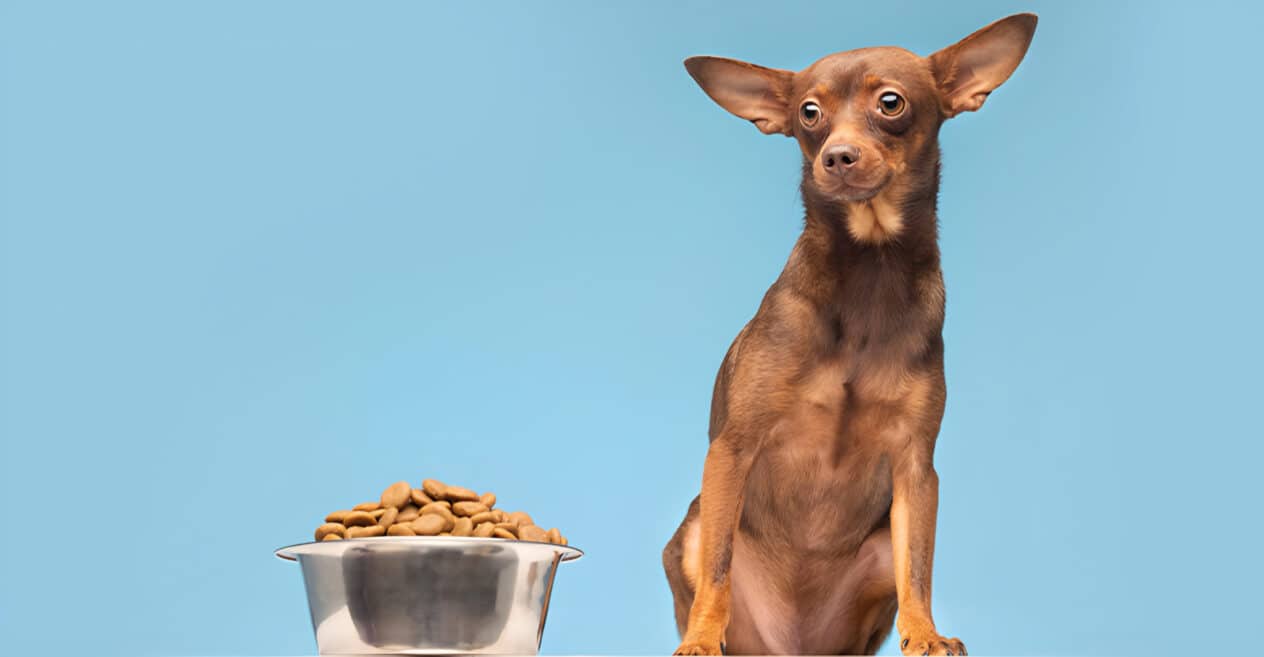
Diet recommendations for dogs with allergies
Feeding an allergic dog can be specific due to the individual reaction to allergens that may be contained in the food. Therefore, below we will provide you with recommendations regarding the selection of a diet for allergy sufferers.
- Elimination diet. Try to identify the allergen by eliminating certain ingredients from the dog’s diet. These can be different types of protein or hypoallergenic recipes with a limited list of ingredients.
- Elimination of potential allergens. Avoid ingredients that often cause allergic reactions, such as soy, wheat, cow’s milk, eggs, chicken and artificial additives.
- Thorough introduction of new products. If you introduce new foods into your dog’s diet, do so gradually and observe the reaction. This will help identify the allergen and avoid further problems.
- Balanced nutrition. Monitor the balance of nutrients in your diet, including proteins, fats, carbohydrates, vitamins, and minerals. Consider adding vitamin and mineral supplements to your diet to ensure adequate nutrition.
- Dietary fodder. Look for specially formulated nutritional foods that contain a limited number of ingredients and are designed for dogs with skin or gastrointestinal allergies.
- Advice from a veterinarian. It is always best to get advice from your vet as they can help you choose the best diet for your dog based on their individual needs and allergies.
List of foods to avoid

Dogs with allergies can react to different foods, but some of them are more likely to cause allergic reactions:
- Wheat and grains. Consider using alternative grains such as rice or corn.
- Soy. Often used in dog food, but can be a potential allergen.
- Chicken meat and eggs. Replace them with other protein sources such as lamb or rabbit.
- Dairy products. Milk, cheese and other dairy products can cause an allergic reaction.
- Artificial additives and preservatives. Some additives and preservatives added to ready-made feeds can also cause allergic reactions. It is worth choosing natural alternatives.
- Citrus fruits. Some dogs may be sensitive to citrus fruits such as oranges or lemons.
- Fish. Although fish contains a lot of healthy fatty acids, some dogs can react to it with allergies.
Each dog can have an individual reaction to different products, so it is important to monitor this and avoid allergens.
Ready feed
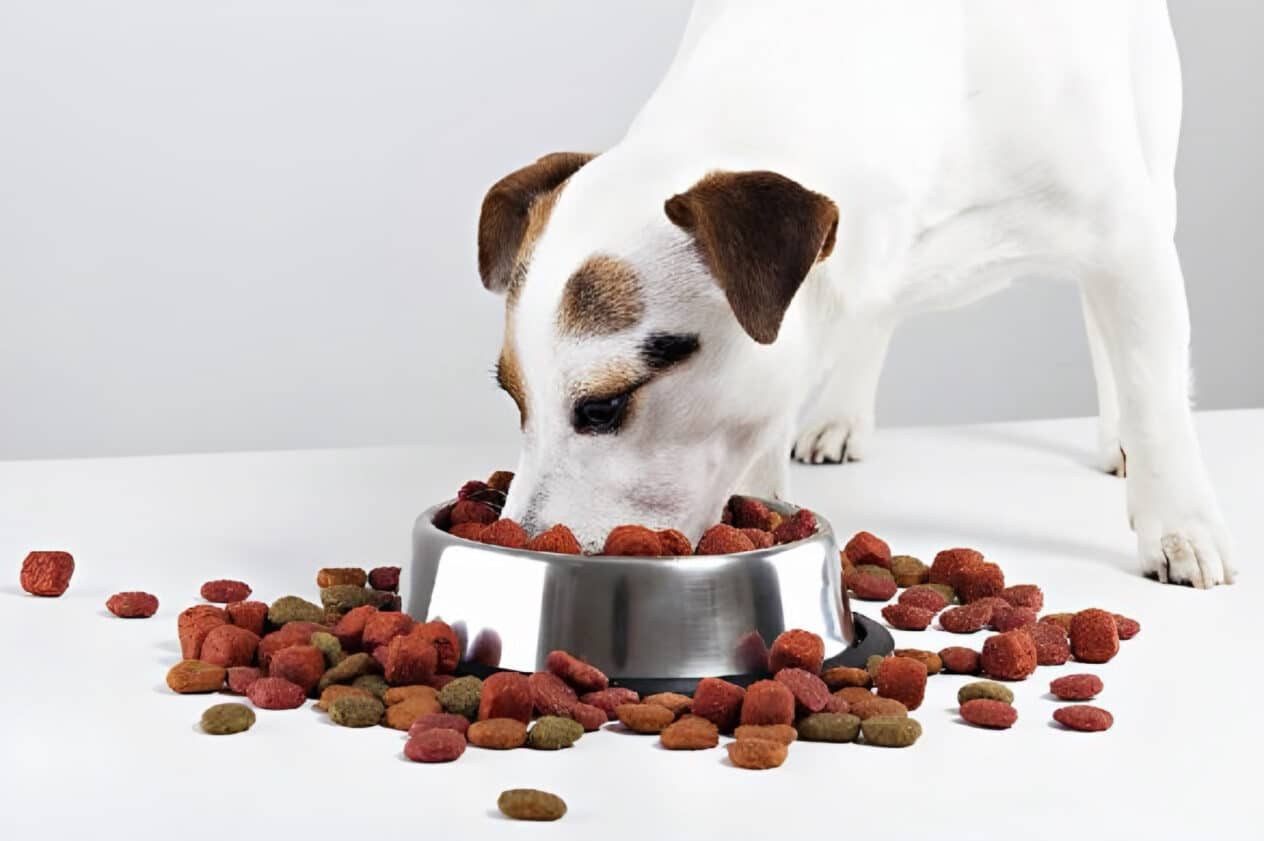
Ready-made dog food is a convenient and popular way to provide your four-legged friend with a balanced diet. They are presented in various forms, including dry feed and wet, canned food.
Advantages and disadvantages of ready feed
Ready-made dog food has its advantages and disadvantages, which should be taken into account when choosing a diet for your pet.
Advantages:
- Balanced composition. Many ready-to-eat foods are formulated to meet your dog’s nutritional, vitamin and mineral needs. They can contain all the necessary components to ensure a healthy diet.
- Convenience. Ready feeds are available in various forms, which makes them convenient to use and store.
- Information about the warehouse. Most manufacturers provide detailed information on the composition and nutritional value of their food, which helps dog owners choose the best products for their pets.
- Safety and quality. Manufacturers of ready-made food usually adhere to high standards of safety and quality, which gives you the confidence that your dog is receiving a safe and healthy product.
- A wide selection. There are a large number of brands and types of ready-made food on the market, which allows dog owners to find the best option for their needs and budget.
Disadvantages:
- Cost. Prepackaged foods can be more expensive than homemade diets, especially if you have a large dog or multiple dogs to feed.
- Artificial additives. Some ready-to-eat foods may contain artificial colors, preservatives, and additives that may not be desirable for a dog’s health.
- Possibility of allergic reactions. If your dog is allergic to certain ingredients, it can be difficult to find a suitable ready-to-eat food that does not contain them.
- Limited selection. Although there are many brands and types of ready-made food on the market, you may not find the perfect one for your dog, or it may be difficult to find food for dogs with specific dietary needs.
When choosing ready-to-eat foods, it is important to carefully evaluate the pros and cons of each particular product and seek the advice of your veterinarian, especially if your dog has special needs or health issues.
Dry dog food may be the best choice in some cases. The main advantage for owners is convenience, because dry food is easy to store, does not need to be cooked, and is also convenient to take with you on trips. It does not spoil quickly, has a balanced composition, and you do not need to worry about whether all the trace elements are enough in the pet’s diet. This is very important, because the condition of the muscles, joints, wool, skin and, in general, the entire body of the animal depends on the food. Dry food can also be a great choice for dogs with sensitive gastrointestinal tracts, as it can help reduce the risk of diarrhea or other problems. And, of course, chewing dry food can help maintain gum health and reduce the risk of oral disease.
Reliability, quality and suitability for your dog’s needs are key factors when choosing dry food. Take the time to research and discuss carefully with your veterinarian to ensure the best choice for your pet.
How to choose high-quality dry feed
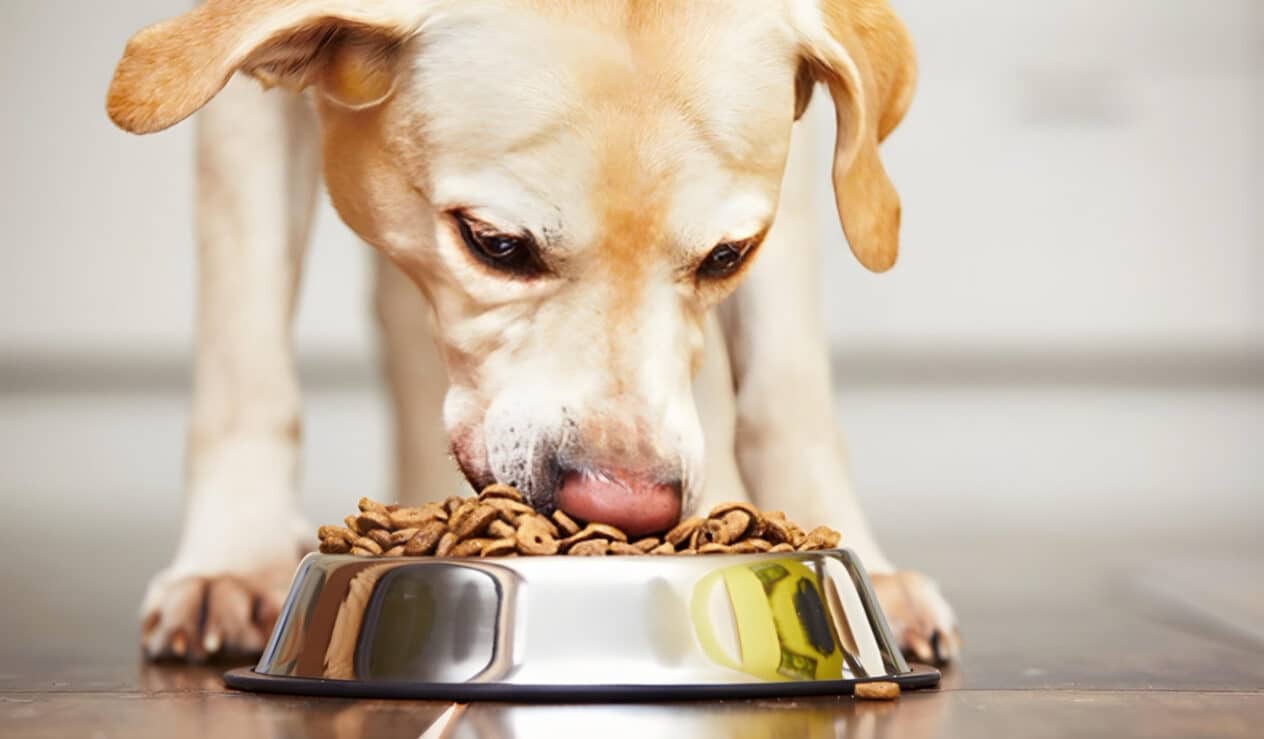
Choosing a quality dry dog food can be key to ensuring their health and well-being. Here are some steps you can take to choose the best option:
- Assess your dog’s needs. Consider your pet’s age, size, activity, health, and special needs. Some foods are designed for specific categories of dogs, such as puppies, adults or dogs with special needs.
- View ingredients. Check the ingredients list on the package. Look for foods that contain meat as the main ingredient. Avoid foods with a lot of preservatives and artificial additives.
- Brand research. Research the brand’s reputation, including its history, quality standards and user reviews. It is important to choose a reliable manufacturer with an excellent reputation.
- Sensitivity testing. If your dog has allergies or a sensitive stomach, try a small amount of the new food to make sure it doesn’t cause any negative reactions.
- Pay attention to the expiration date and storage. Make sure that the feed you choose is not out of date and is stored correctly. Follow the expiration date and store the feed in a dry and cool place.
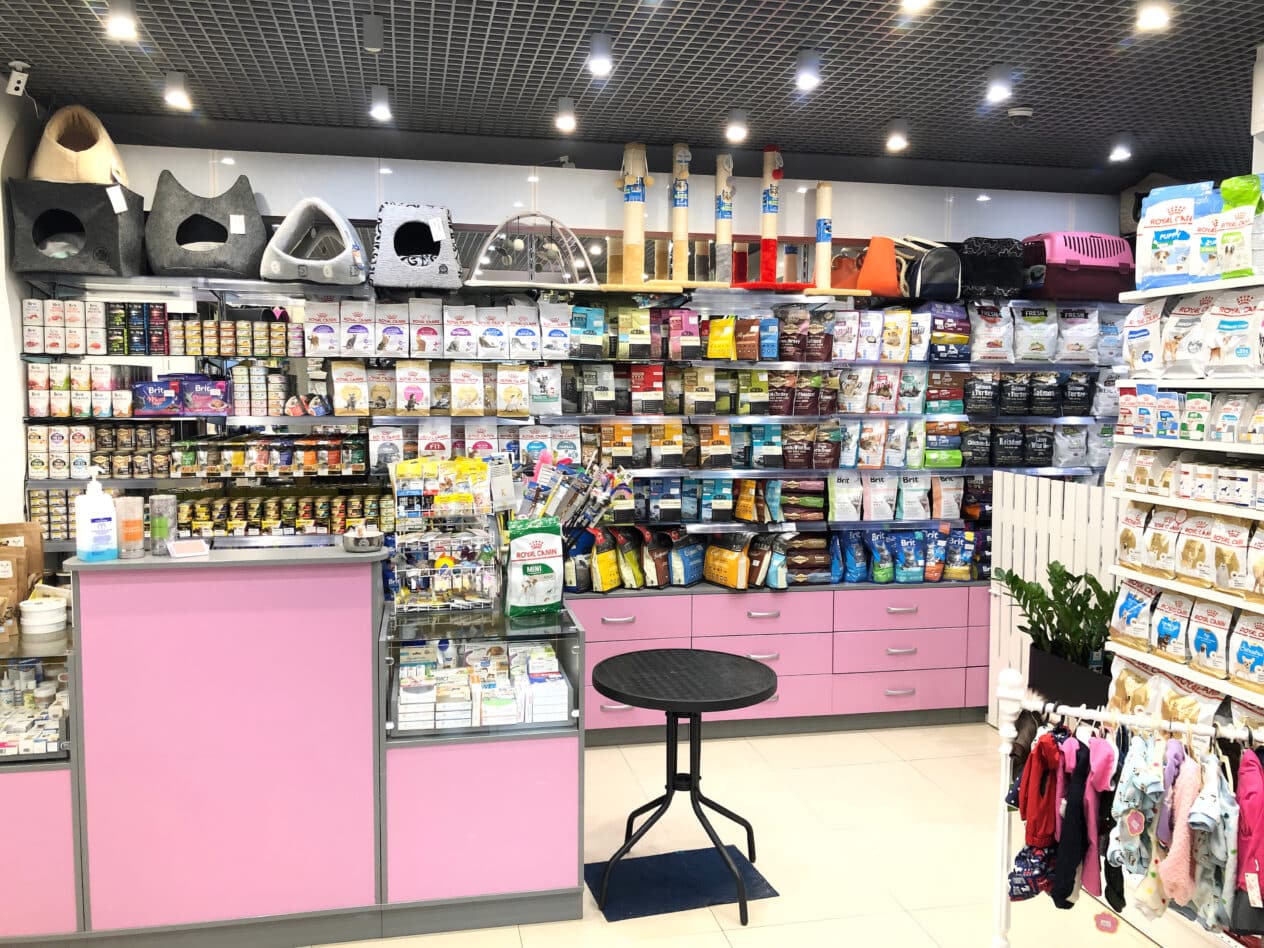
In our salon “V.O.G DOG” in the village Kryukivshchyna you will find a wide selection of the best ready-made food for your dog. We strive to provide your furry friends with balanced and high-quality nutrition, which is why our assortment includes well-known brands of quality dog food that take into account the needs of different breeds and age groups of dogs. In addition to a wide selection of ready-made feeds, you can get advice from our specialists in our store.
We work to ensure that your dogs are healthy, happy and well-groomed, so we invite you to visit our store “V.O.G DOG” in the village of Kryukiv region and get quality products and professional advice.

